Introduction
One of the great paradoxes of cycling gear is this: there are so many great cycling shoes on the market, yet it is incredibly difficult to find shoes that fit just right. This especially true if you often do long-distance rides and/or prefer efficient (read: stiff) shoes.
More hours in the saddle amplify little niggles, pains and otherwise ill-fitting gear that would otherwise go barely noticed to intolerable degrees.
Shoes are one of those things where try before you buy is certainly good advice. But even if you do, there is always a chance that you will discover that the shoes don’t fit your feet the way you expected them to after you leave the store and start using them on the bike.
Cycling shoes in your chosen size might feel OK tried on in a store (or fresh out of the box tried on the floor of your home), but the ultimate test is actually putting them into use for the intended purpose: pedaling for hours on the bike. One or two long rides in, you may discover that what felt like a well-fitting pair of shoes are actually an expensive mistake.
One of the most common reasons why many cyclists find it difficult to find shoes that fit well is having wide feet that the shoes doesn’t accommodate in the forefoot area as the feet expand further during the pedaling motion.
Most cycling shoes are actually made rather narrow. The reason those of us with wide feet find this issue more problematic in cycling shoes is due to the fact that they’re made with stiffer soles and a more rigid construction compared to other kinds of shoes, like casual or running shoes.
Why Wide Shoes Matter? A Quick Note About Foot Anatomy And Biomechanical Performance In Cycling
Our ability to engage the right muscles to optimize our power output on the bike is a function of several things, including the bone structure of our feet and the extent to which the supporting musculature can support these bones effectively.
Simply speaking, if your cycling footwear is not offering the necessary comfort and support to your feet, then (assuming no other issues) the resulting inability of your feet bone structure and musculature to perform optimally become the weak link on the bike.
The reasons include soreness, hotspots and other issues resulting from ill-fitting footwear, with one of the most common culprits being a forefoot (aka metatarsal) area that is too restrictive.
The answer is to make enough room in the shoes’ front area for the metatarsal bones to dynamically move under muscle load.
Many cycling shoes manufacturers have started paying more attention to the need for wide shoe options to accommodate riders whose feet need more room in the metatarsal bone region.
In this article I present some of what I believe are the best options currently on the market for cycling shoes made for wide feet.
Mountain Bike Shoes For Wide Feet
1. Lake MX238 Wide Mountain Bike Shoes
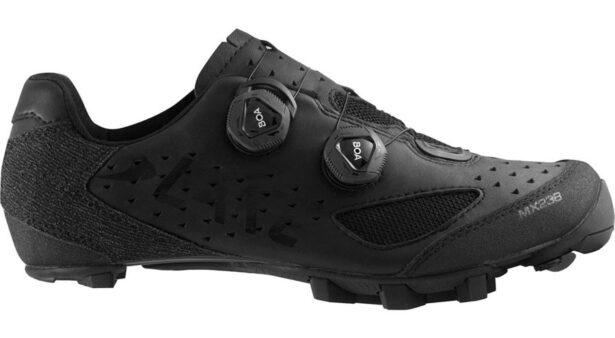
Lake is an innovative manufacturer of premium cycling shoes. Lake is known for not only their attention to detail and quality in cycling shoe design, but also on their focus on fit and comfort.
They were one of the first cycling shoes manufacturers to start offering shoes that accommodate wider feet.
The MX238 is one of the offerings within Lake’s off-road line of cycling shoes, and it comes with the usual array of premium features like a full-grain leather upper, dual BOA closure dials, abrasion resistant heel and toe panels and a full carbon sole.
2. Shimano XC702 Wide
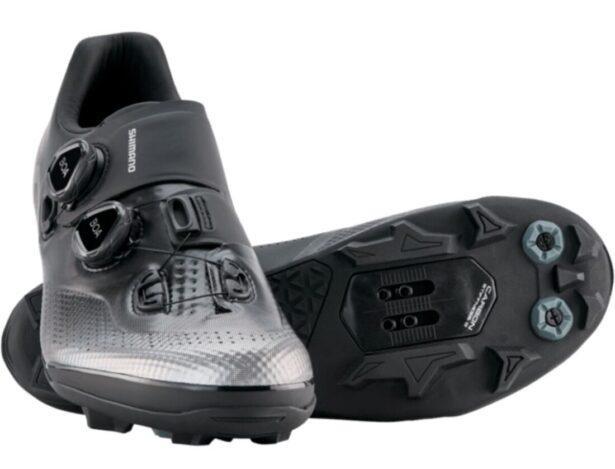
I previously reviewed Shimano’s excellent XC7 shoes, and to this day they remain one of my all-time favorite pair of cycling shoes. The newer XC702 carries the torch of excellence in fit and function.
I love the dual boa closure and – based on personal experience – few shoes on the market in the same category match the quality and comfort of Shimano’s Dynalast footed.
3. Specialized Recon 2.0 Wide
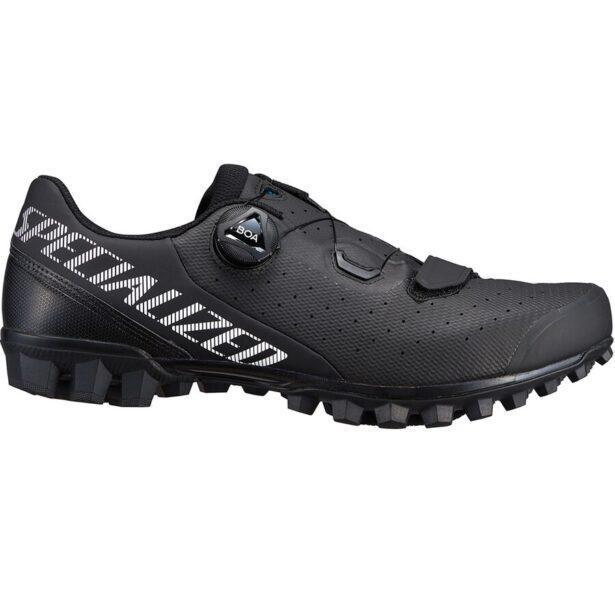
I previously reviewed the predecessor of the current Specialized Recon 2.0 shoes, the Expert XC. Specialized is perhaps best known for its world-famous mountain bikes, but their line of cycling shoes and apparel has some excellent offerings.
That being said, the top tier cycling shoe offerings from Specialized, the S-Works Recon, initially seemed to be a hit-or-miss in the sizing department, with many buyers reporting an uncomfortable forefoot area and the BOA wires uncomfortably digging into the top of the foot.
Specialized introduced wide versions of the Recon 2.0 (as well as the S-Works Recon), which seems to have remedied the fit issues with these otherwise excellent mountain bike/gravel shoes.
Road Bike Shoes For Wide Feet
1. Shimano RC5 Wide Cycling Shoes
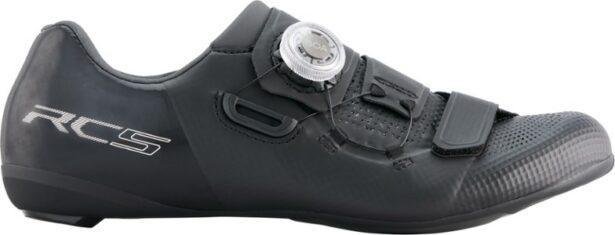
The RC5 is Shimano’s mid-tier road shoe. While it doesn’t have all the bells and whistles that Shimano’s top of the line RC9 road shoes come with, it is not short on quality construction and comfort.
Unlike many shoe manufacturers, Shimano actually offers wide versions across their most of its cycling shoe range, opening up the wide options further down the range from the premium (and very expensive) shoes. The RC5 wide is a great road shoe with a carbon sole and single Boa L6 and a tough synthetic upper.
2. Lake CX 302 Extra Wide Shoes
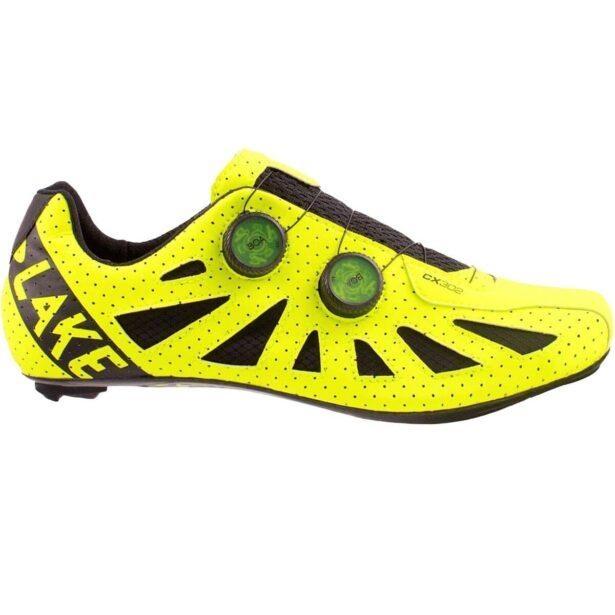
A wide forefoot is not enough for your feet? How about extra-wide? The CX302 from Lake offer 15mm of additional volume at the ball of the foot compare to the standard-fit last, which is claimed to make for more comfortable and efficient high-cadence cycling.
The CX302 come with a full carbon fiber sole, dual Boa Li2 dials (I love Boa Li2 for the multi-directional micro-adjustment they offer, which makes it very easy to adjust the fit while riding). If you’re a fan of bright colours, the CX302 are offered in a Hi-Viz yellow that will ensure that you’re highly visible in any group ride!
3. Specialized S-Works Ares Wide Road Shoe
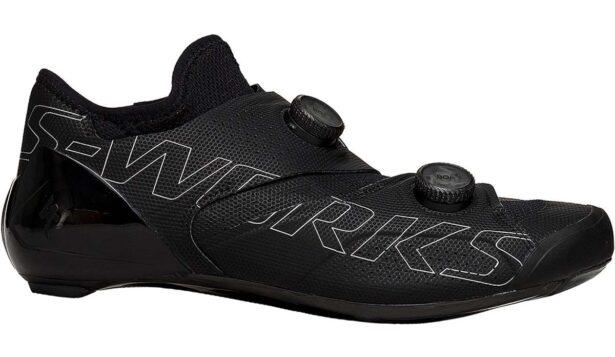
If you’re on a money-is-no-object road cycling shoes buying mission, and want a wide fit, you probably want to include the S-Works Ares Wide from Specialized pretty high on your shortlist.
These road super shoes offer arguably everything you’d want in a pair of premium road cycling shoes: super lightweight, ultra-stiff sole, symmetrical Boa closure for comfort and support and a minimalist yet refined look.
4. Fizik Tempo Overcurve R4 Wide Fit Road Shoes
The Fizik Tempo Overcurve R4 Wide Fit Road Shoes offer a unique solution for cyclists with wide feet, featuring an innovative Overcurve construction for an asymmetrical yet comfortable fit.
These shoes balance efficiency and comfort with a carbon-injected nylon R4 outsole and a breathable, durable upper. Enhanced with a micro-adjustable BOA IP1-B dial, they provide a precise and adaptable fit, making them a top choice for wide-footed road cyclists.
Buying Tips
Your options are not limited to wide vs standard fit.
technologies such as custom insoles and heat molding are also available in the cycling shoe market. If you are very picky when it comes to shoe sizing, you can consider broadening your menu of options.
“Wide” is not the same as “high-volume”.
Some brands use these terms interchangeably, but they often mean different things, and this can be confusing. When we talk about wide shoes, we specifically refer to extra width in the forefoot area. The manufacturer uses differently shaped versions of the lowers to make the wide version (which is what brands like Lake do).
In contrast, high-volume shoes are often those that utilize the same lower with some extra material added to the upper, which makes the shoe roomier throughout its length.
The problem with this is that this often results in other undesirable fit issues, such as what is known as “heel slip” (because not only is the shoe roomier in the forefoot, but the extra volume is added to everywhere else).
Do you need high volume or wide fit? This entirely depends on how your feet are shaped, including your forefoot, heel and instep. This brings us to the next tip…
Consider doing a pro fit session with a bike fitter who also offers cycling shoe fitting.
This will enable you to figure out the type of fit you should be shopping for (high-volume vs wide) and also allow you to make specific fit adjustments to match your own needs (such as accounting for minor differences in leg length using pedal shims).
Consult the size charts, but do not place absolute trust in them.
Manufacturer size charts should generally be considered a quick guide to tell you, at a glance, if a given size will be approximately a good fit for your feet or not. That’s it.
They’re no guarantee that the shoe will actually be comfortable during actual use. Nothing, and I mean nothing, will give you more confidence in fit than actually trying out the shoes on the bike.
This might mean that you accept the fact that you have to spend some time trying out different shoes from manufacturers until you find your “holy grail” of bike shoe fit.
And yes, you might lose some money doing that. Consider that an investment in the happiness of your feet and long-term comfort on the bike.
Conclusion
Mass produced cycling shoes, as advanced as the features that they offer and the materials they’re made of, come in sizing ranges that are made to fit the average lengths and shapes of human feet. This means that finding your ideal size and fit is not a very straightforward process.
A critical factor in finding comfortable cycling shoes is how much room the forefoot of the shoes has to account for the expansion that happens in your feet under muscular load.
The trick in shoe construction is to account for this without compromising the fit of the rest of the shoe, such as the heel area.
There is no specific measure that defines what constitutes a “wide feet”. If your current cycling shoes do not allow adequate comfort in the forefoot area, especially during long rides or spirited training efforts, consider a pair that comes in a wide fit option.

Hani Morsi is a seasoned multi-discipline cyclist with a particular liking for mountain and gravel bikes. Hani is also a mountain bike coach, trail builder and experienced bike mechanic.




Appreciate yr review. I have bunion problems and wear peloton. Biking shoes for indoor biking. Any recommendations for women’s peloton adapters able biking shoes?? I wear 7.5. Right now only Altra work for me but need new biking shoes for peloton only. Would appreciate your advice!!
No bonts huh?